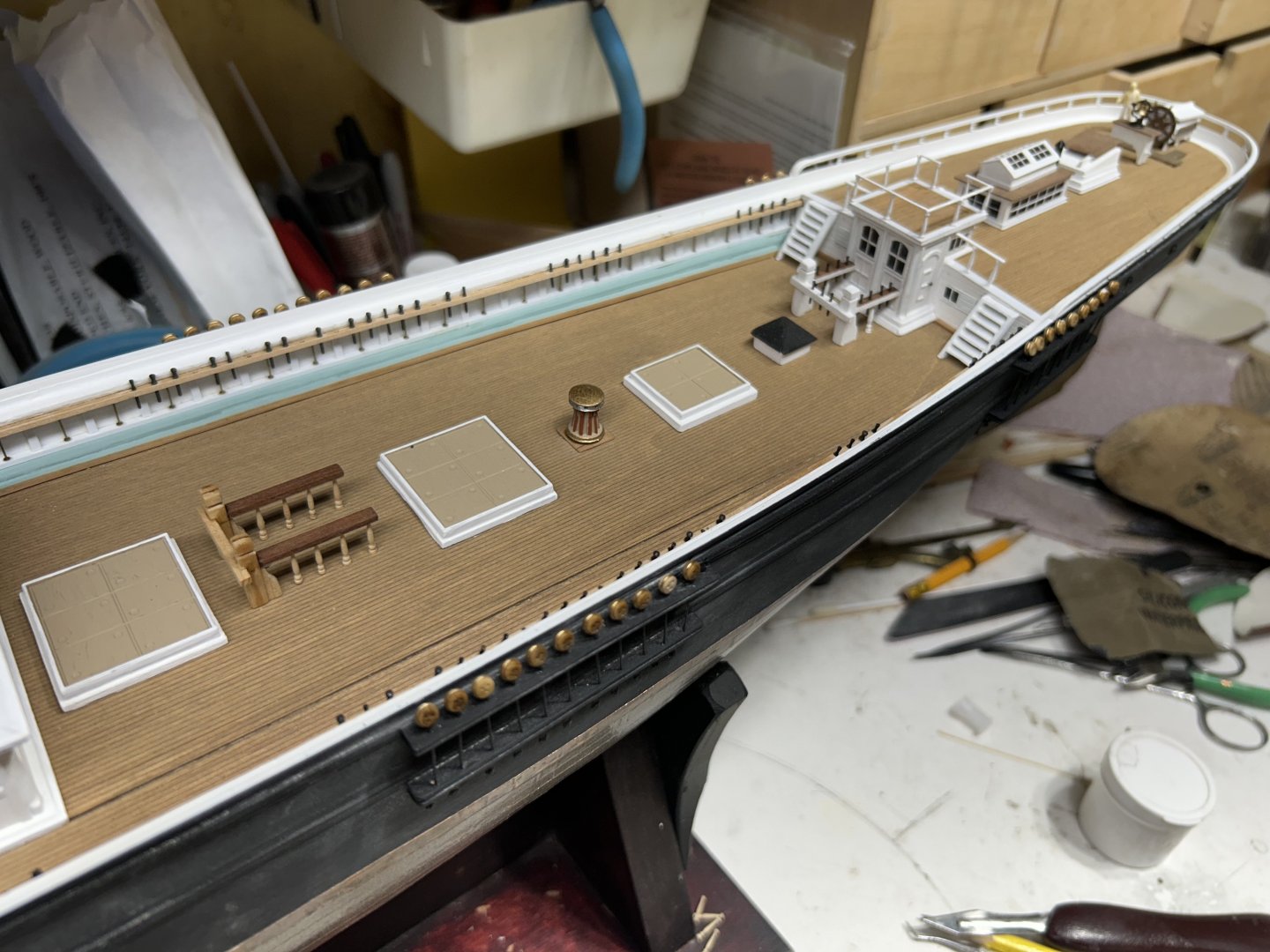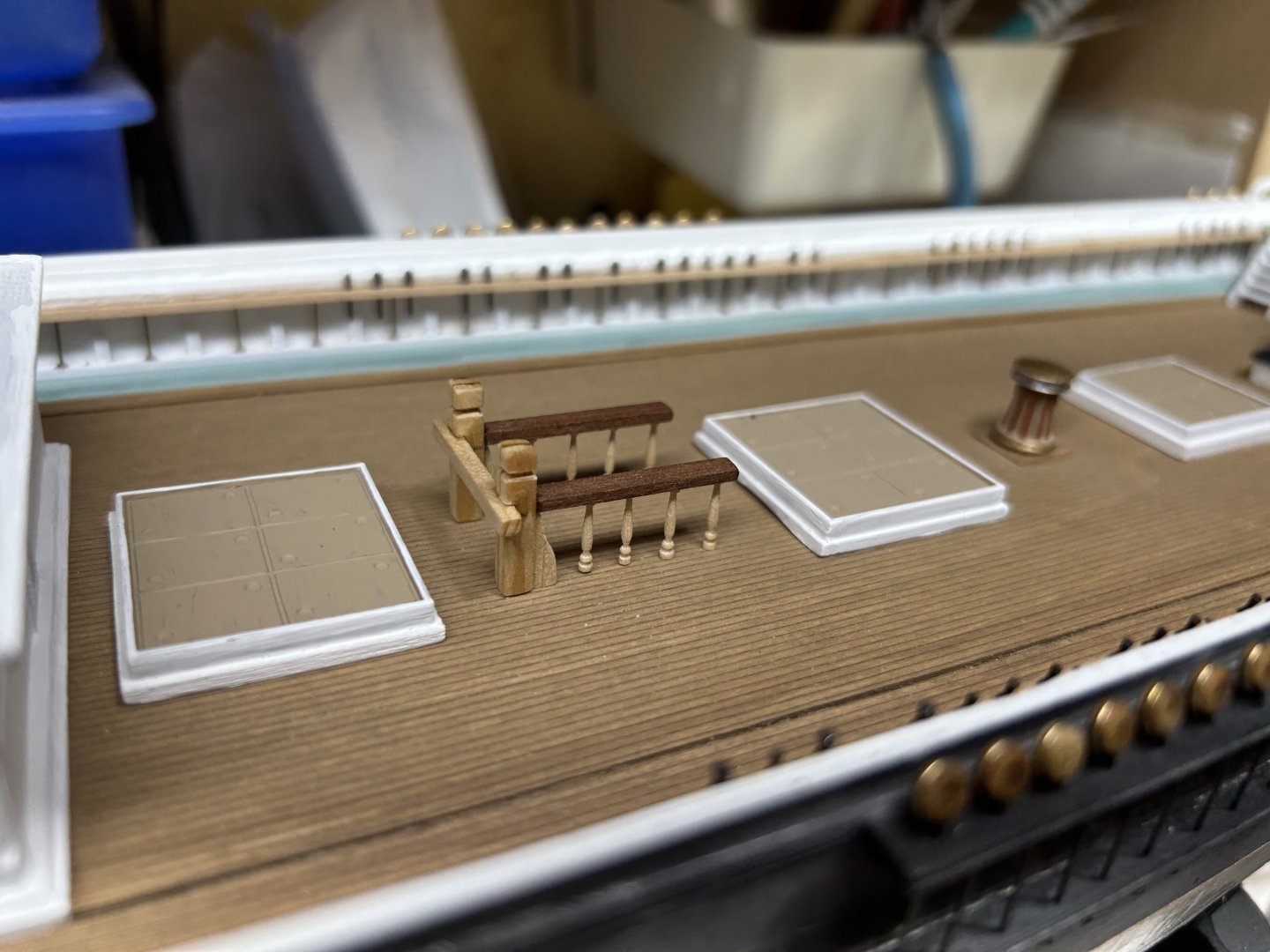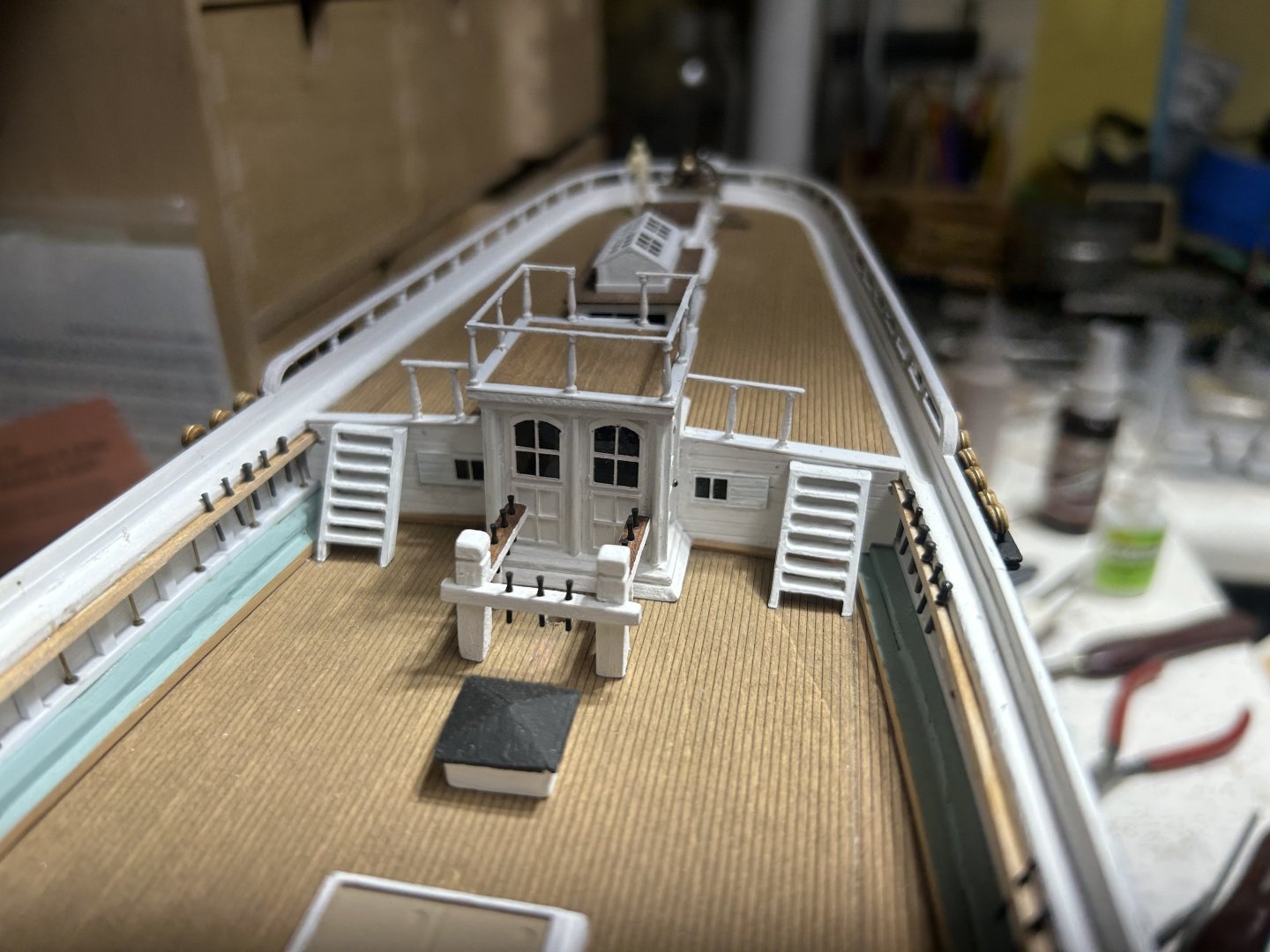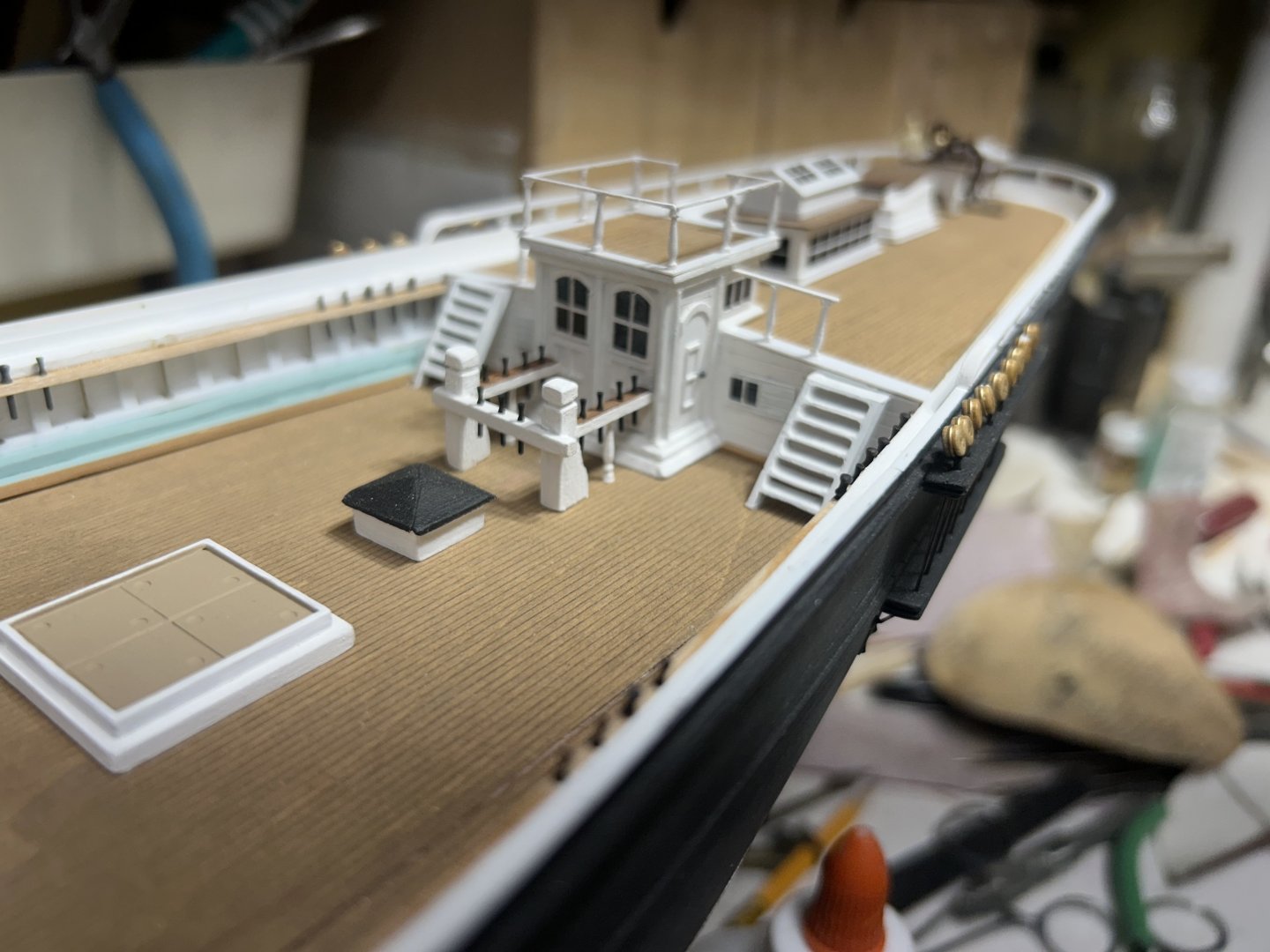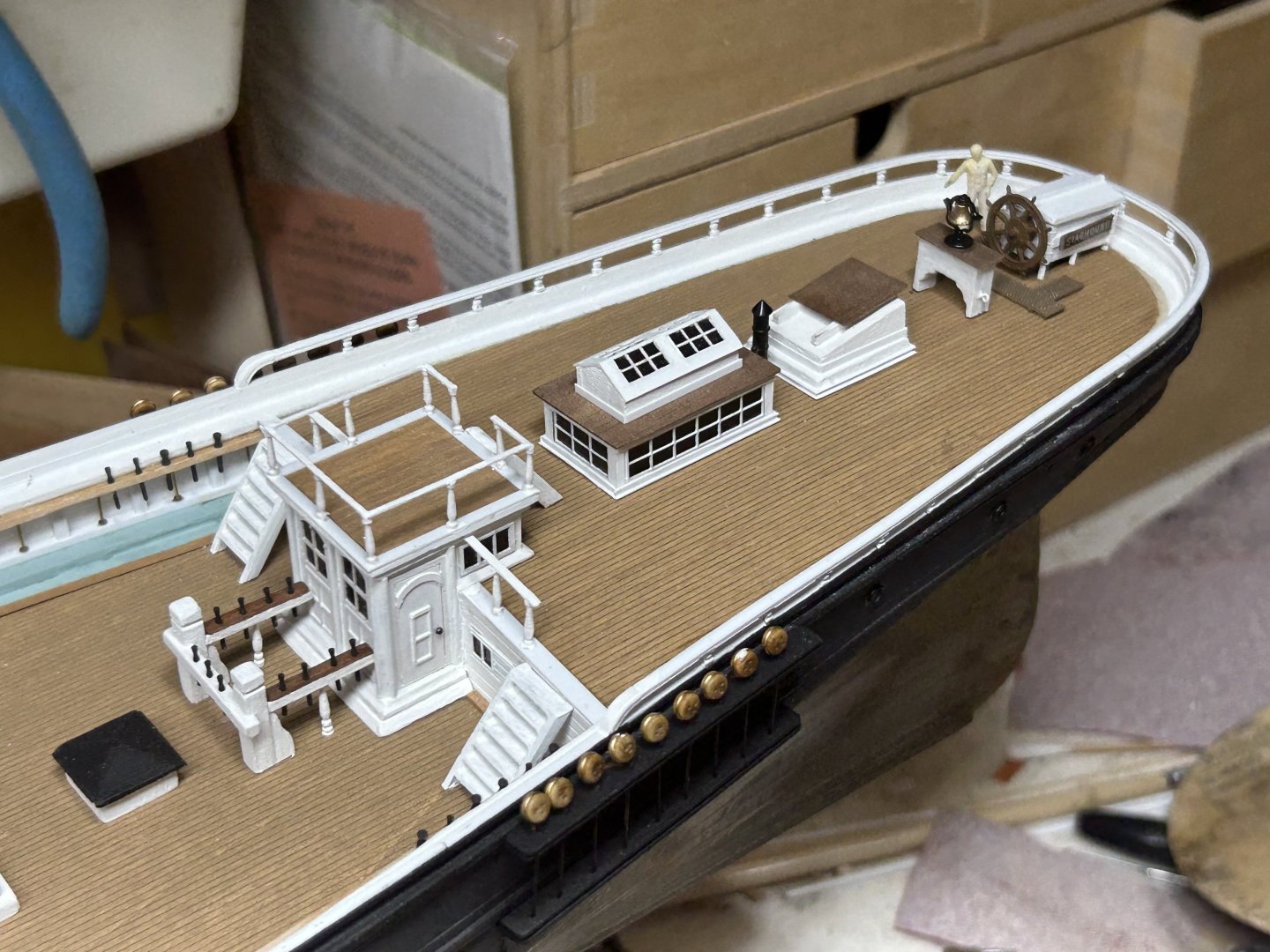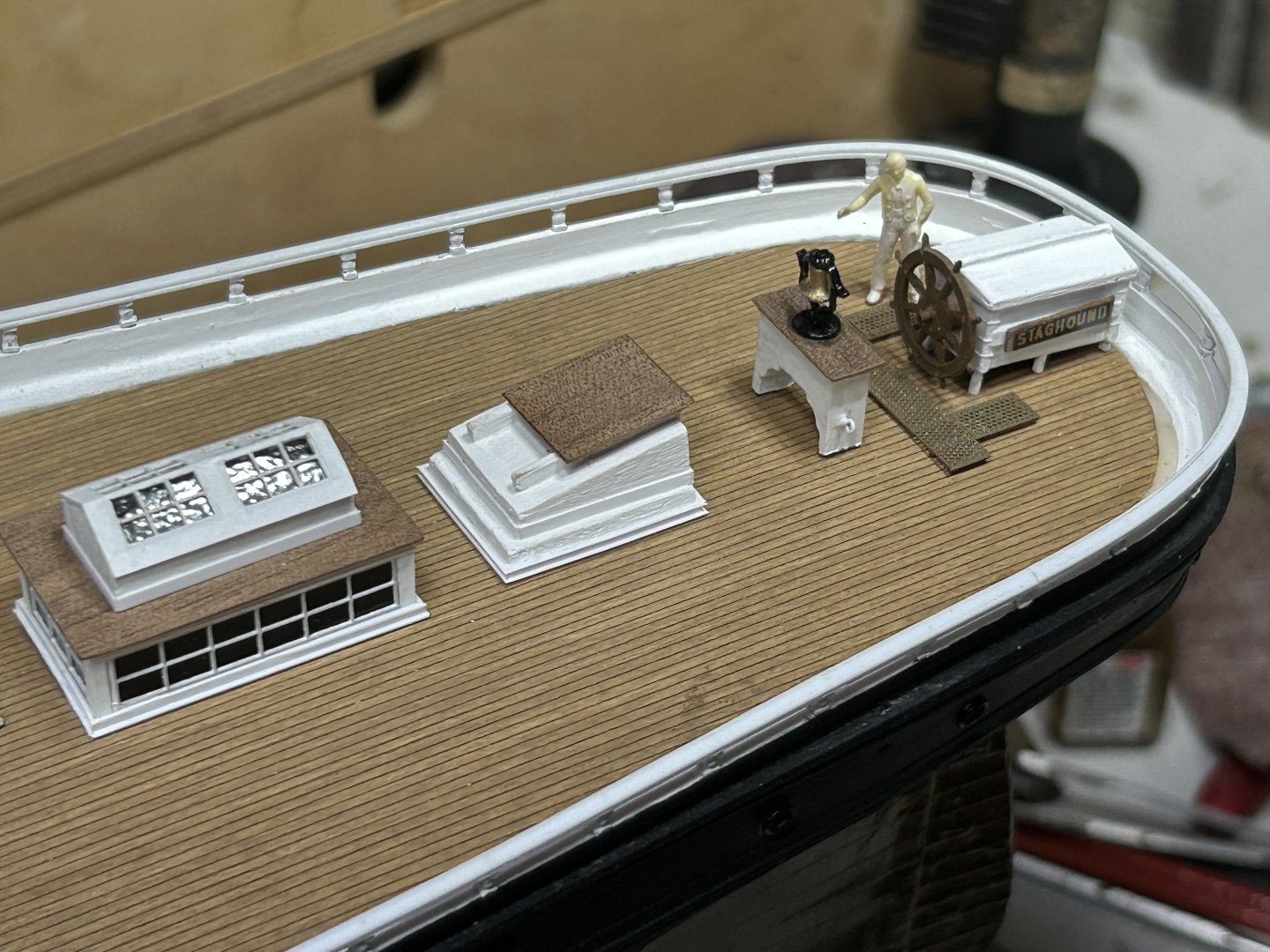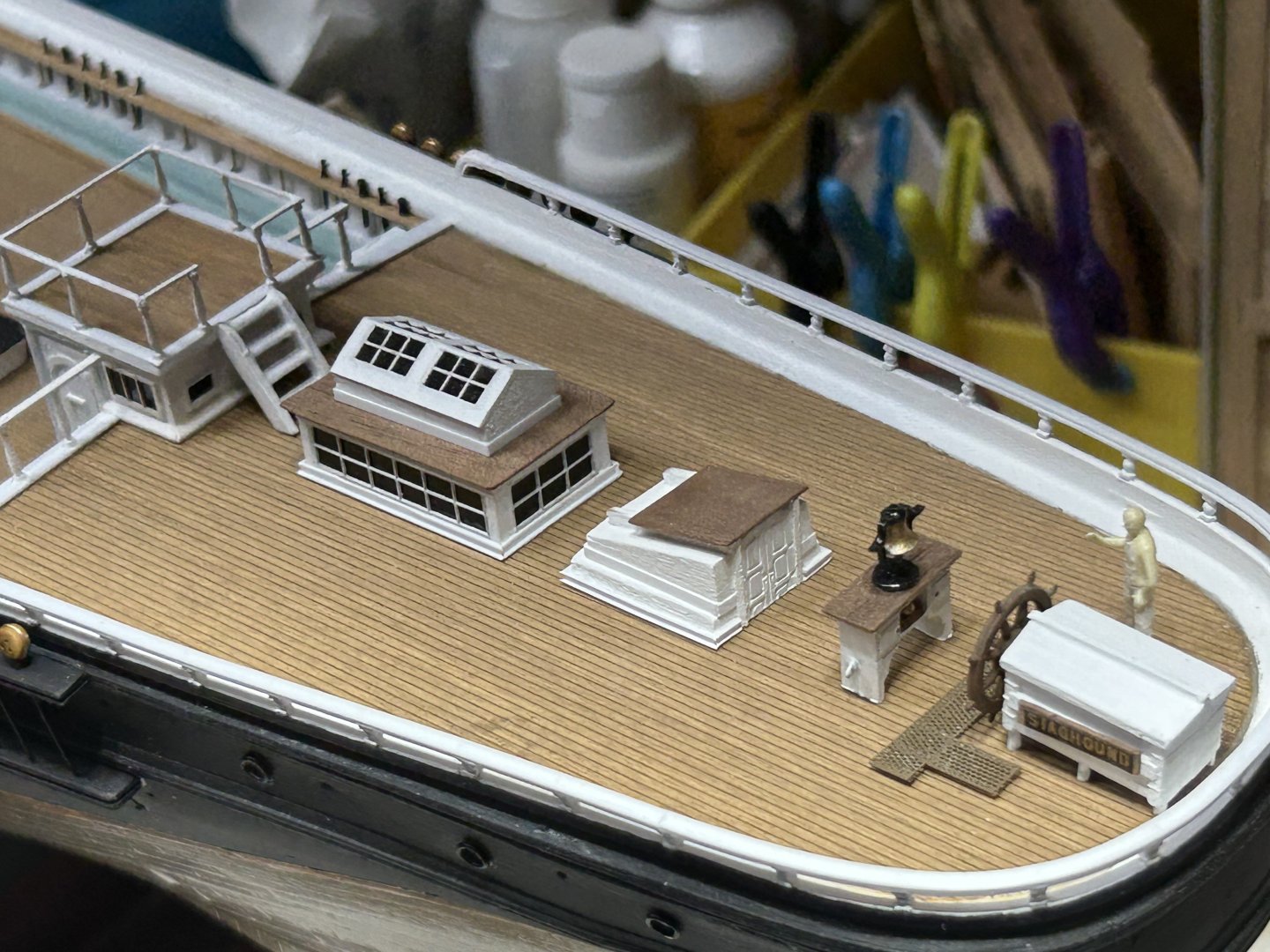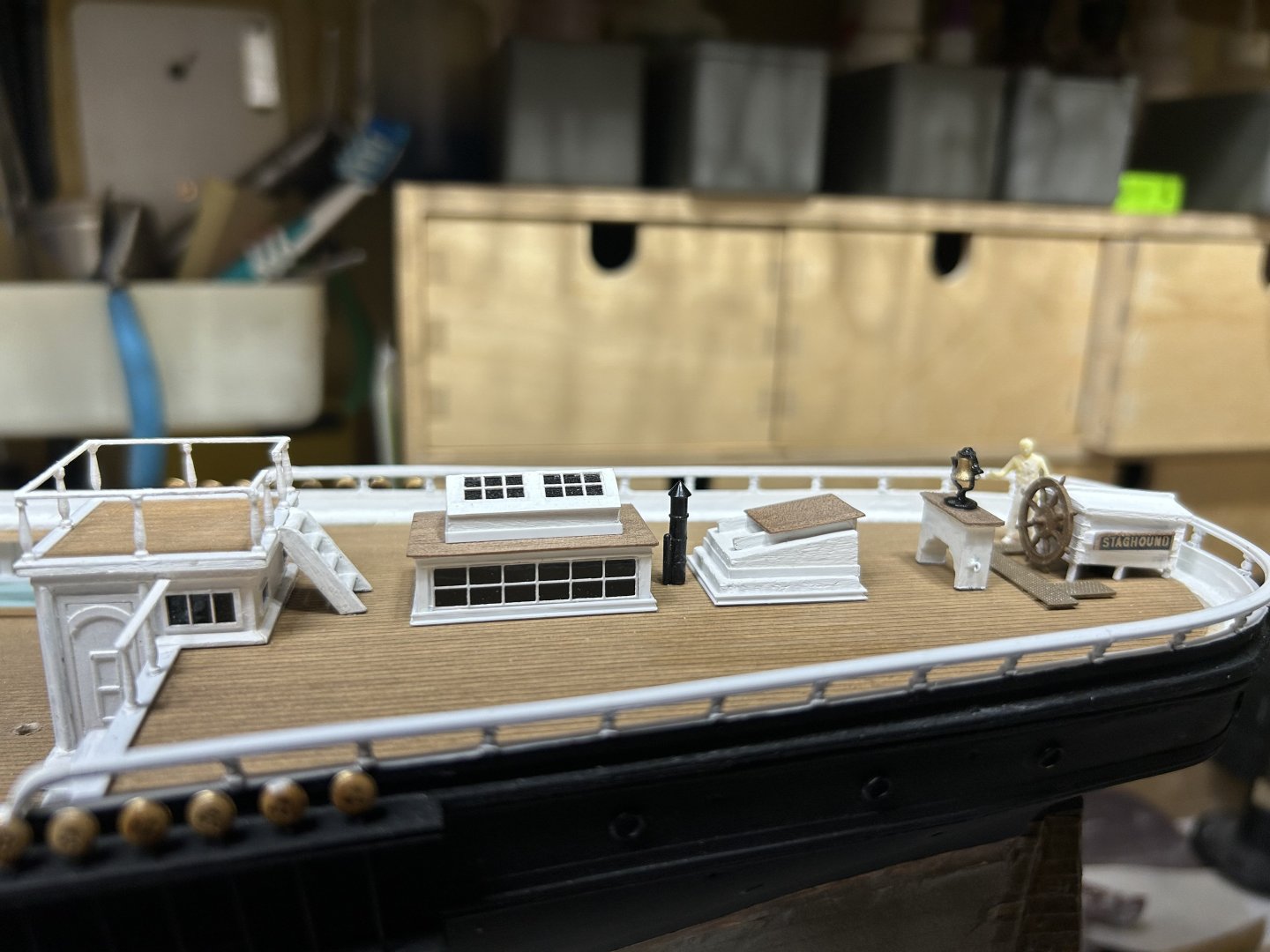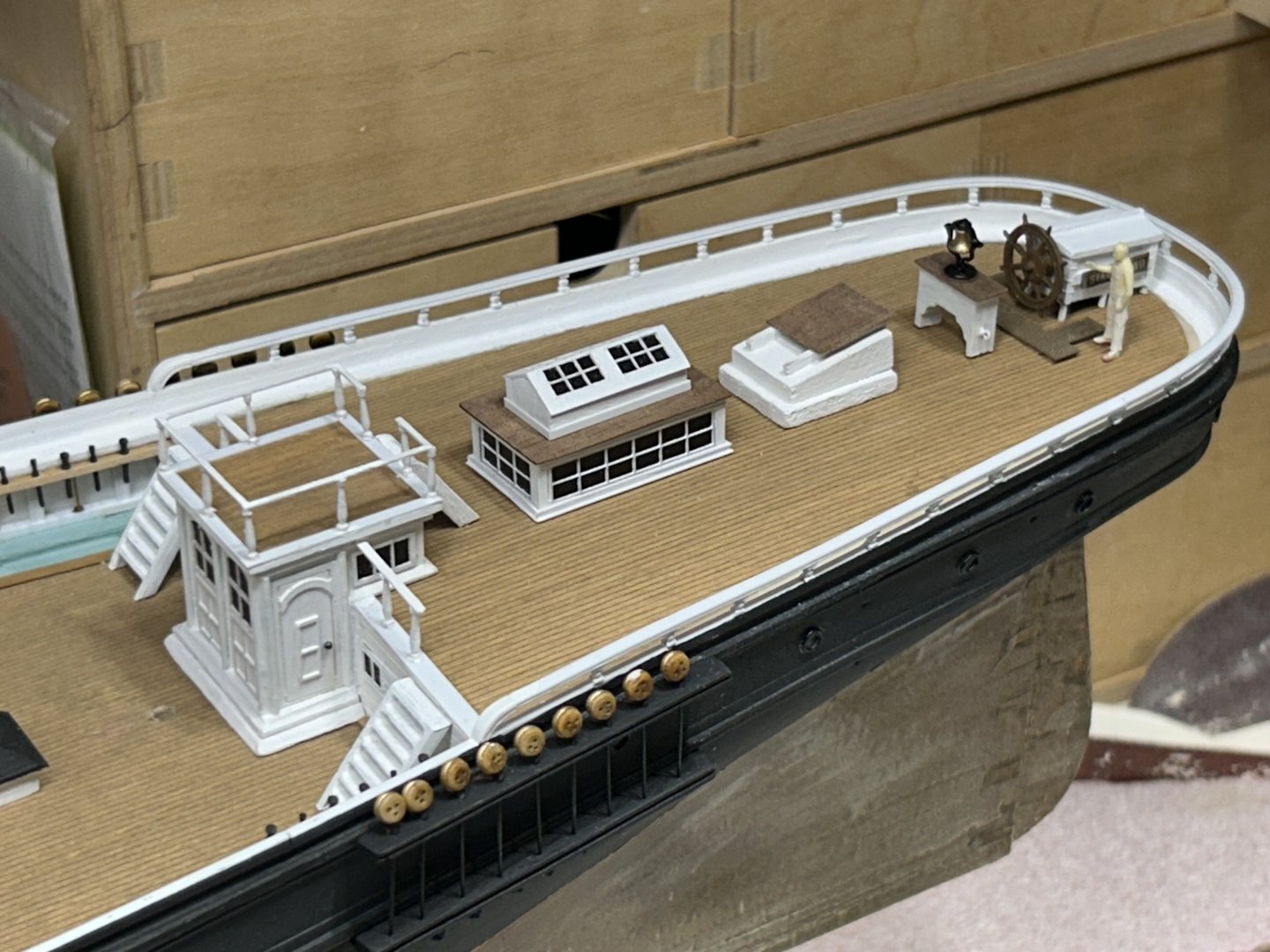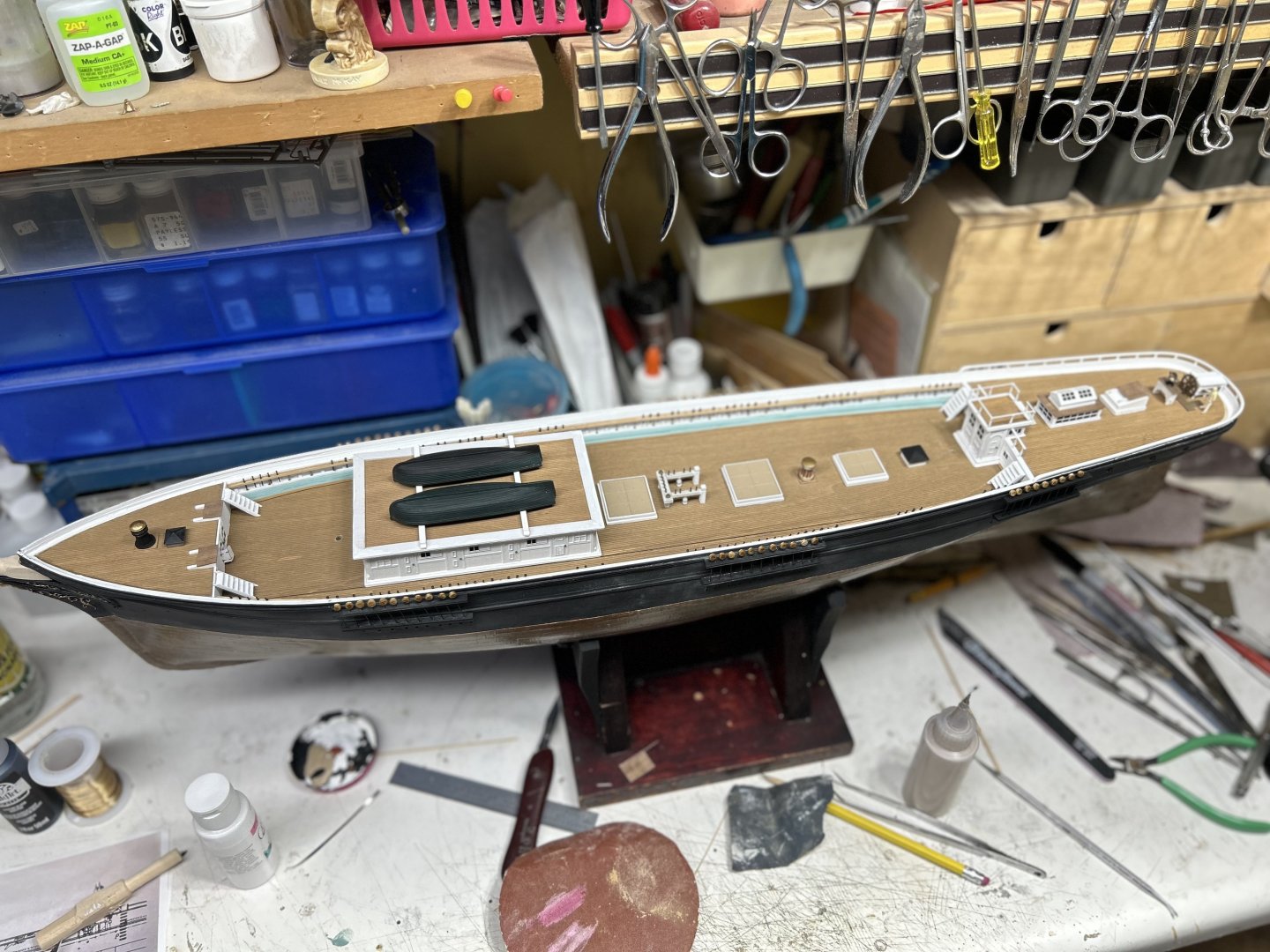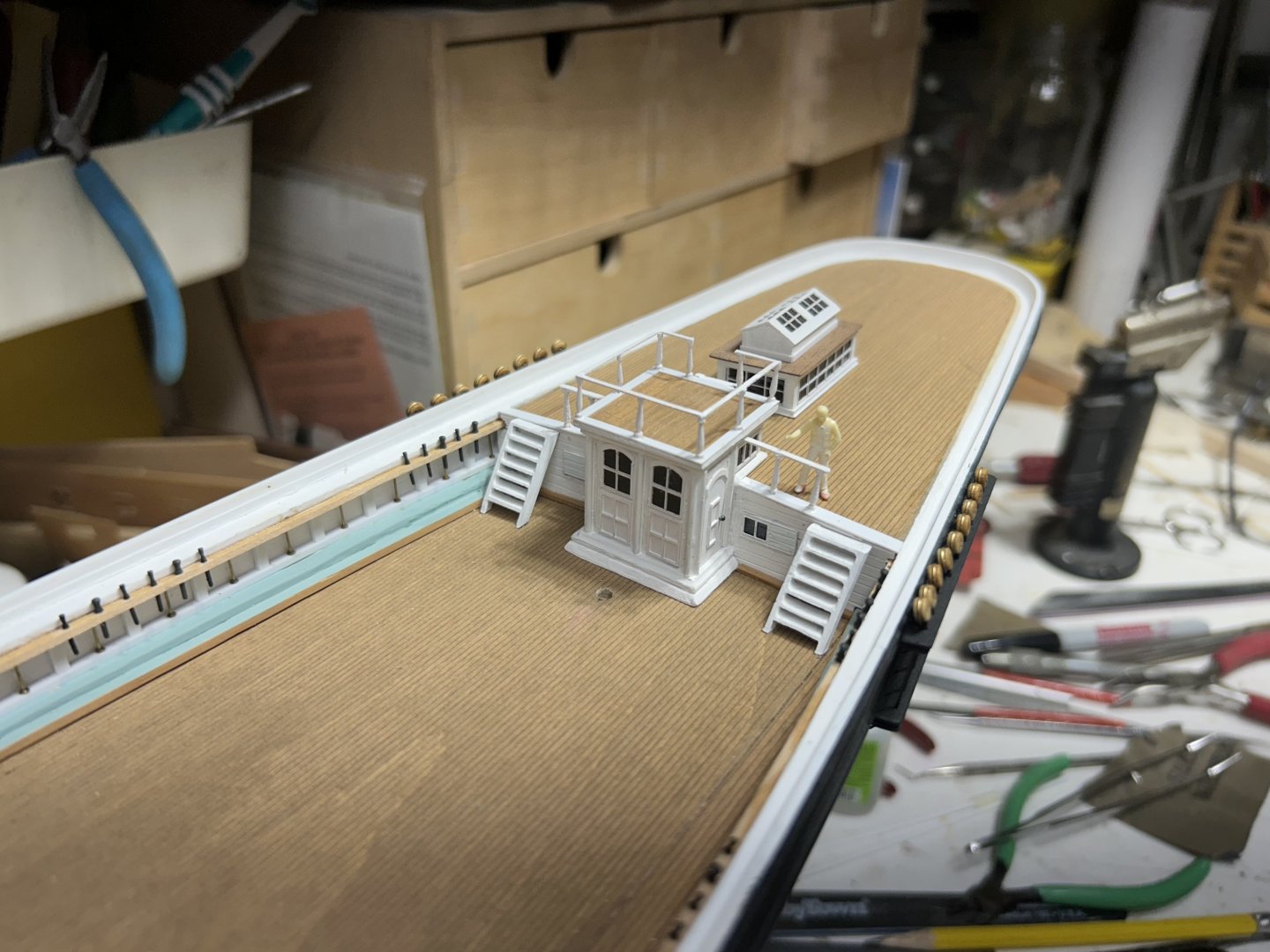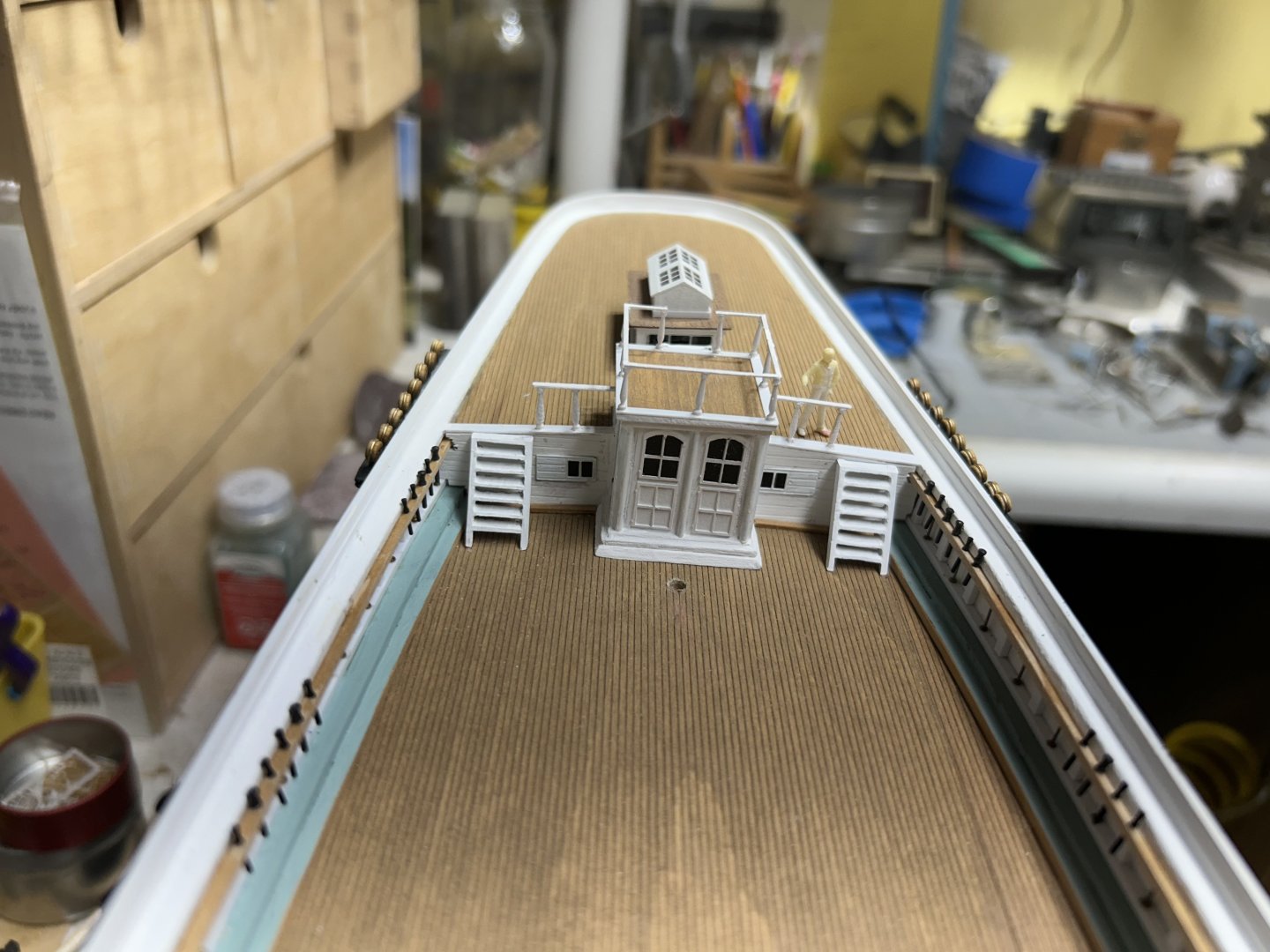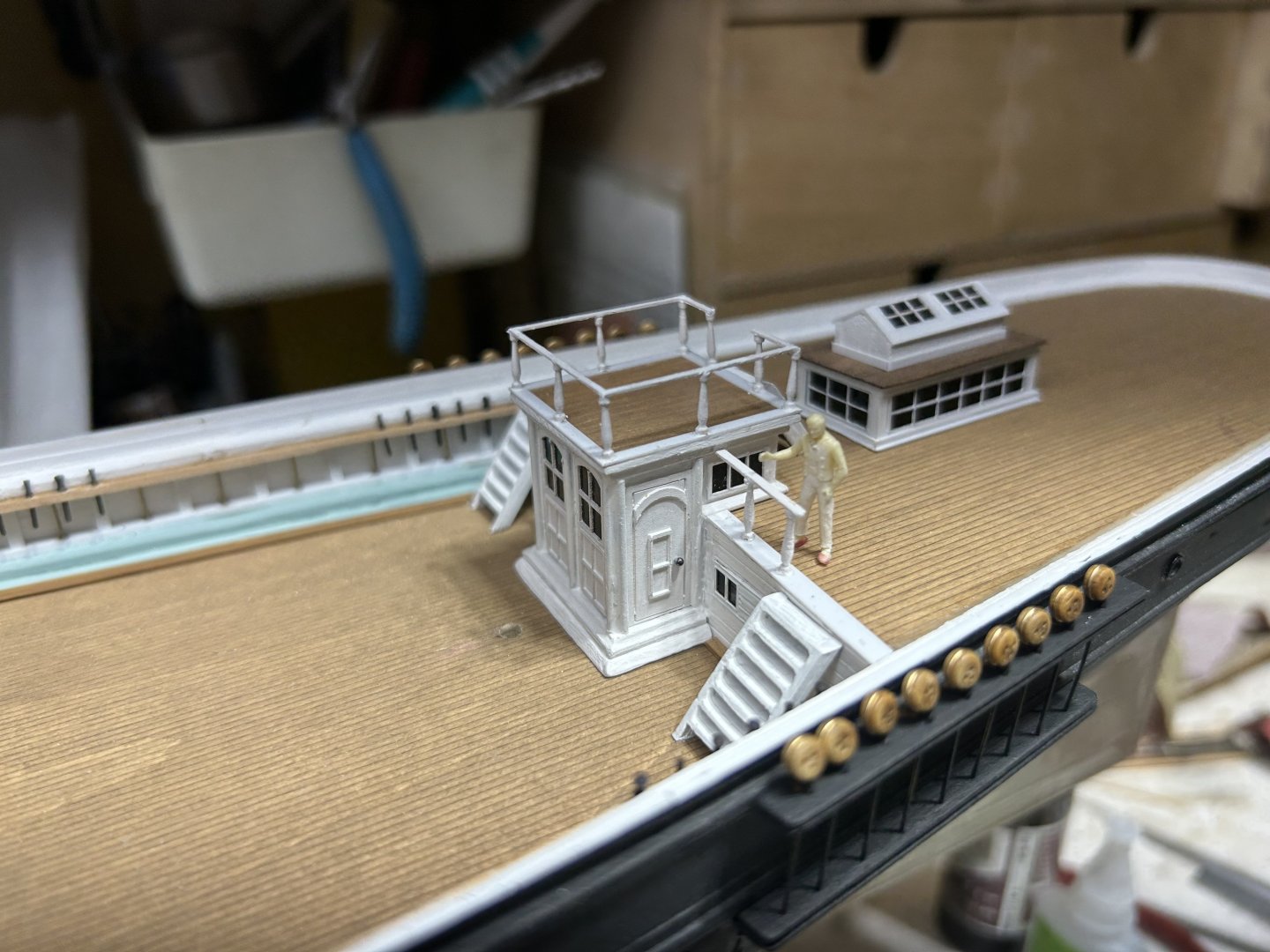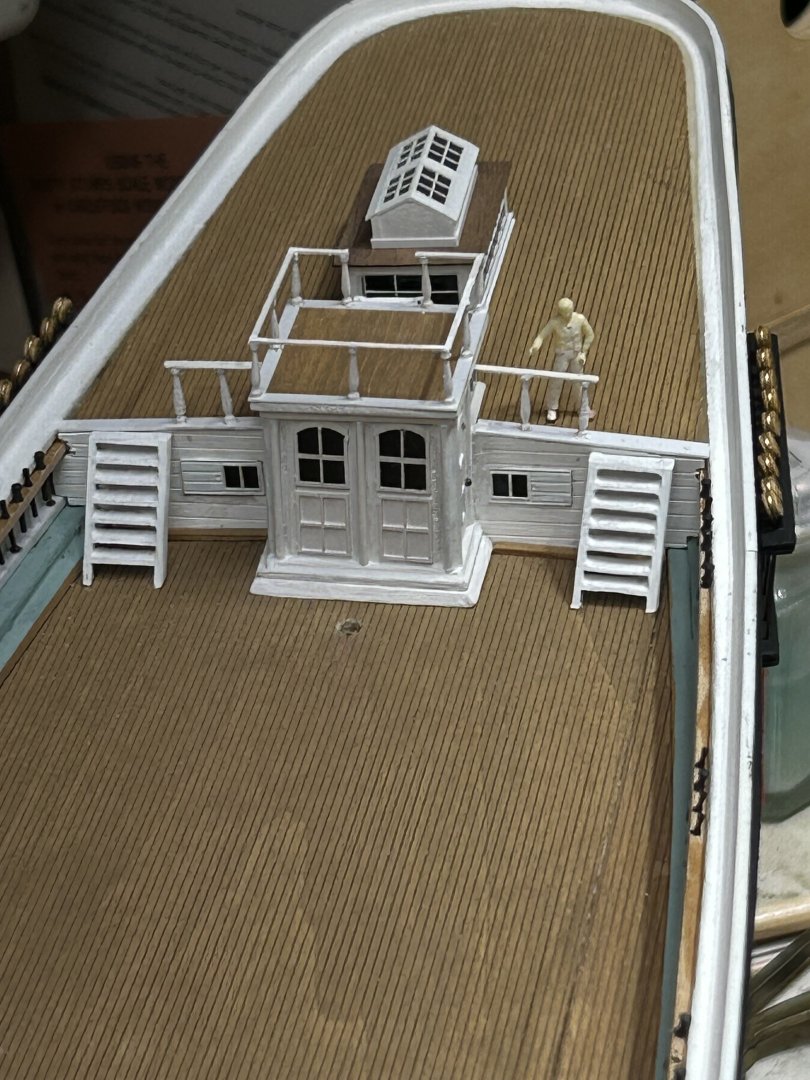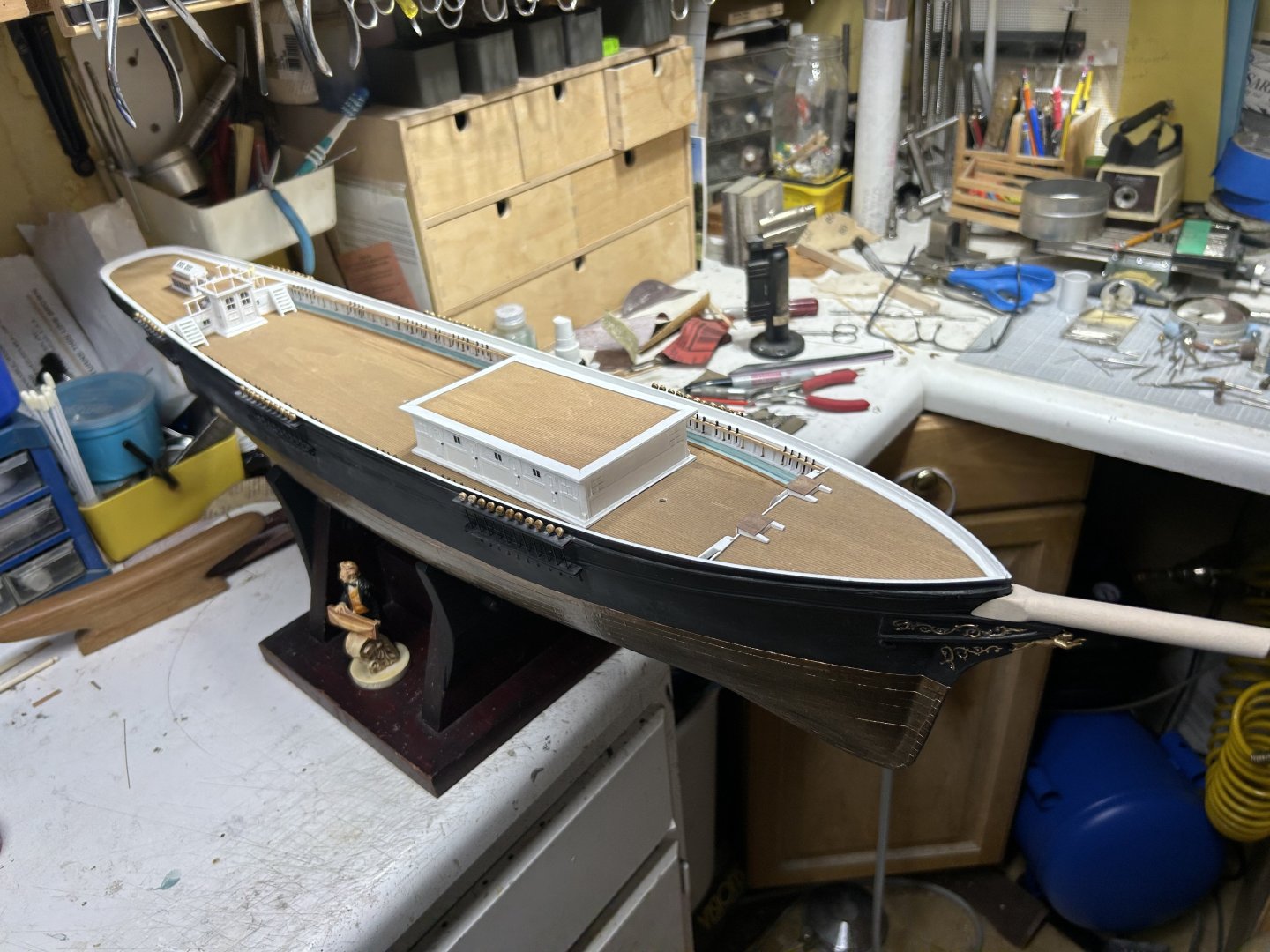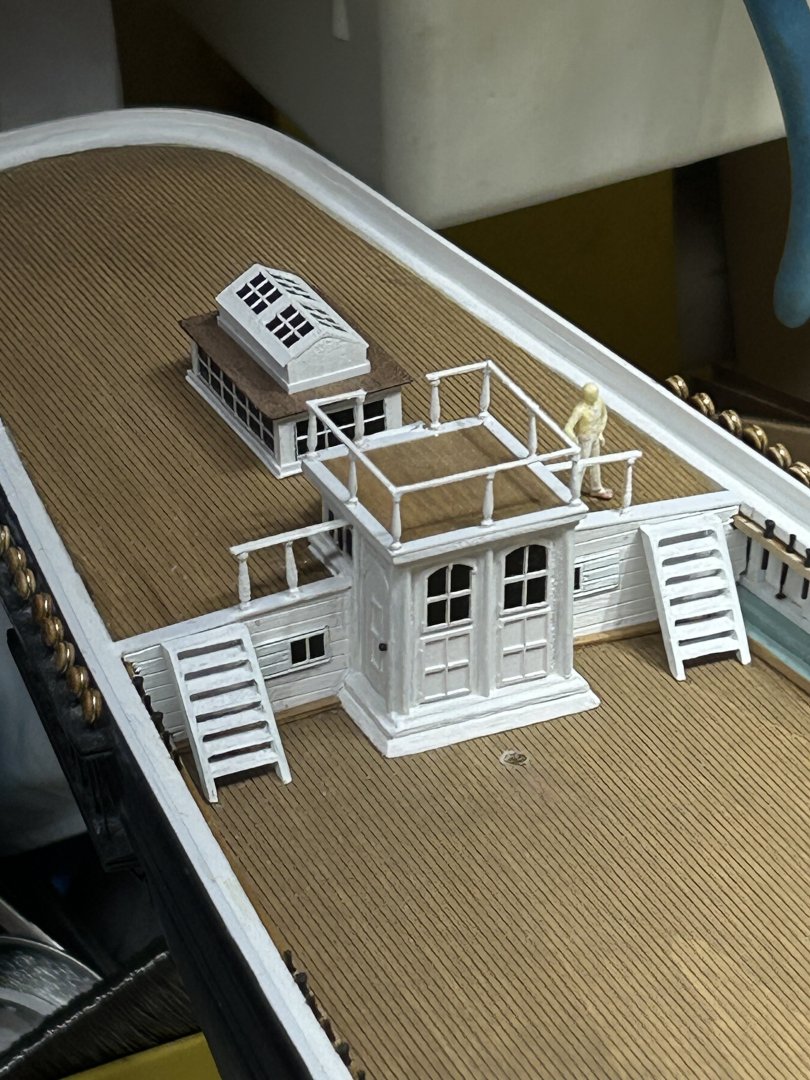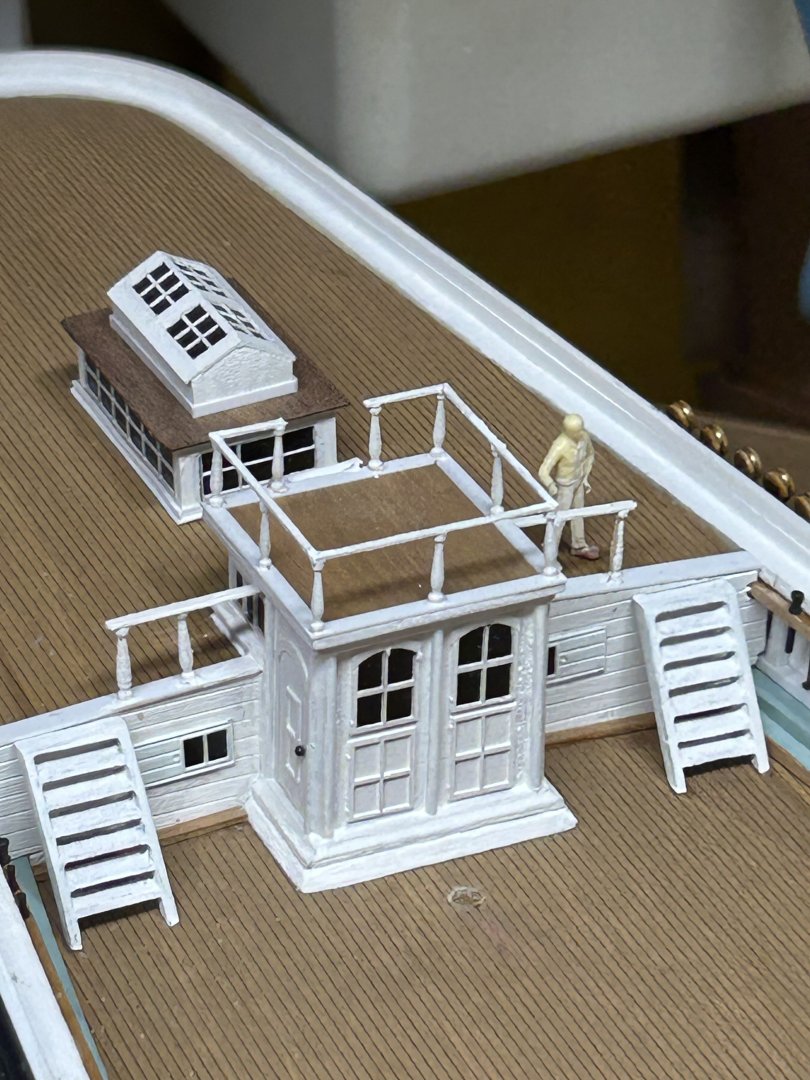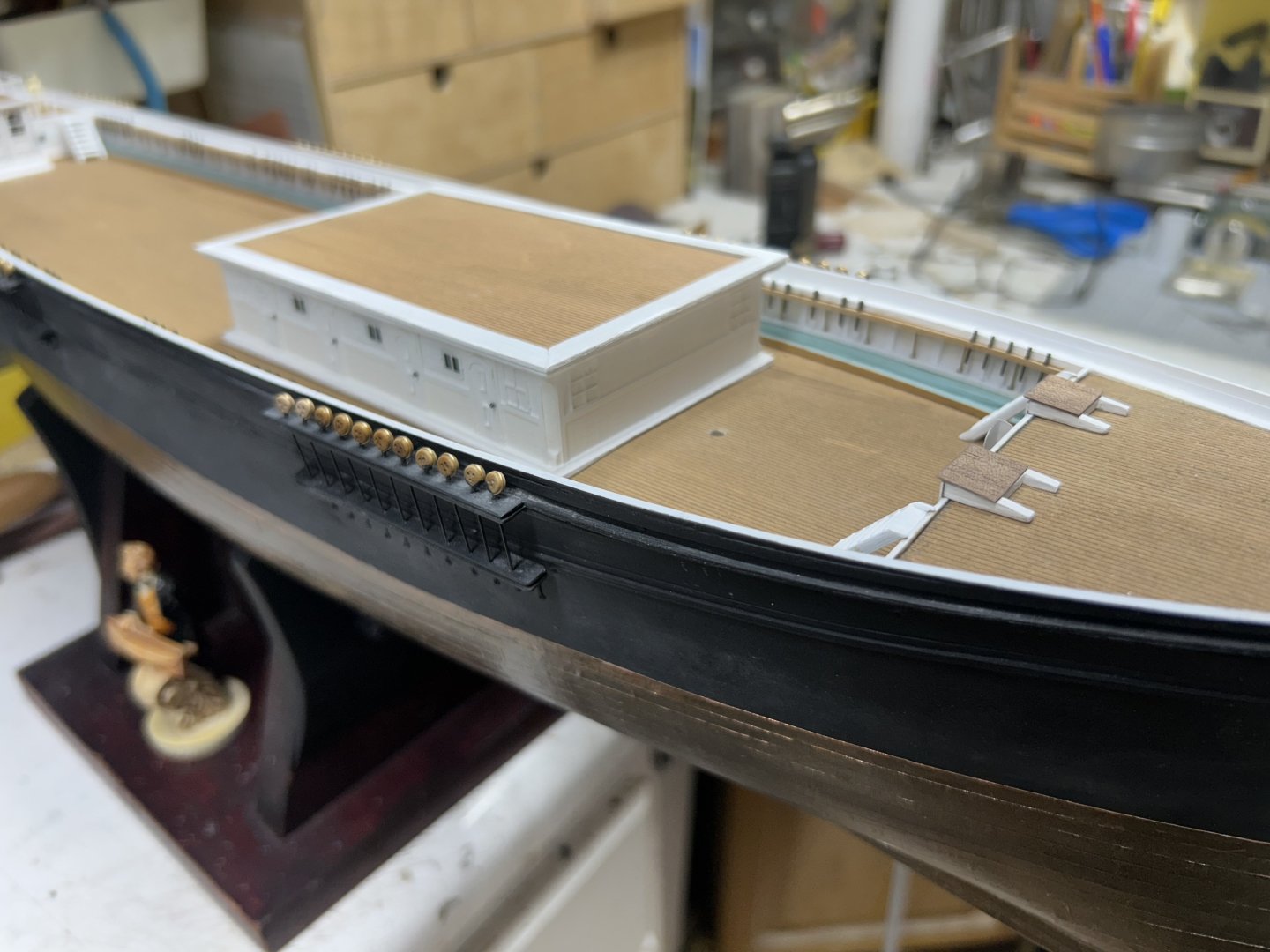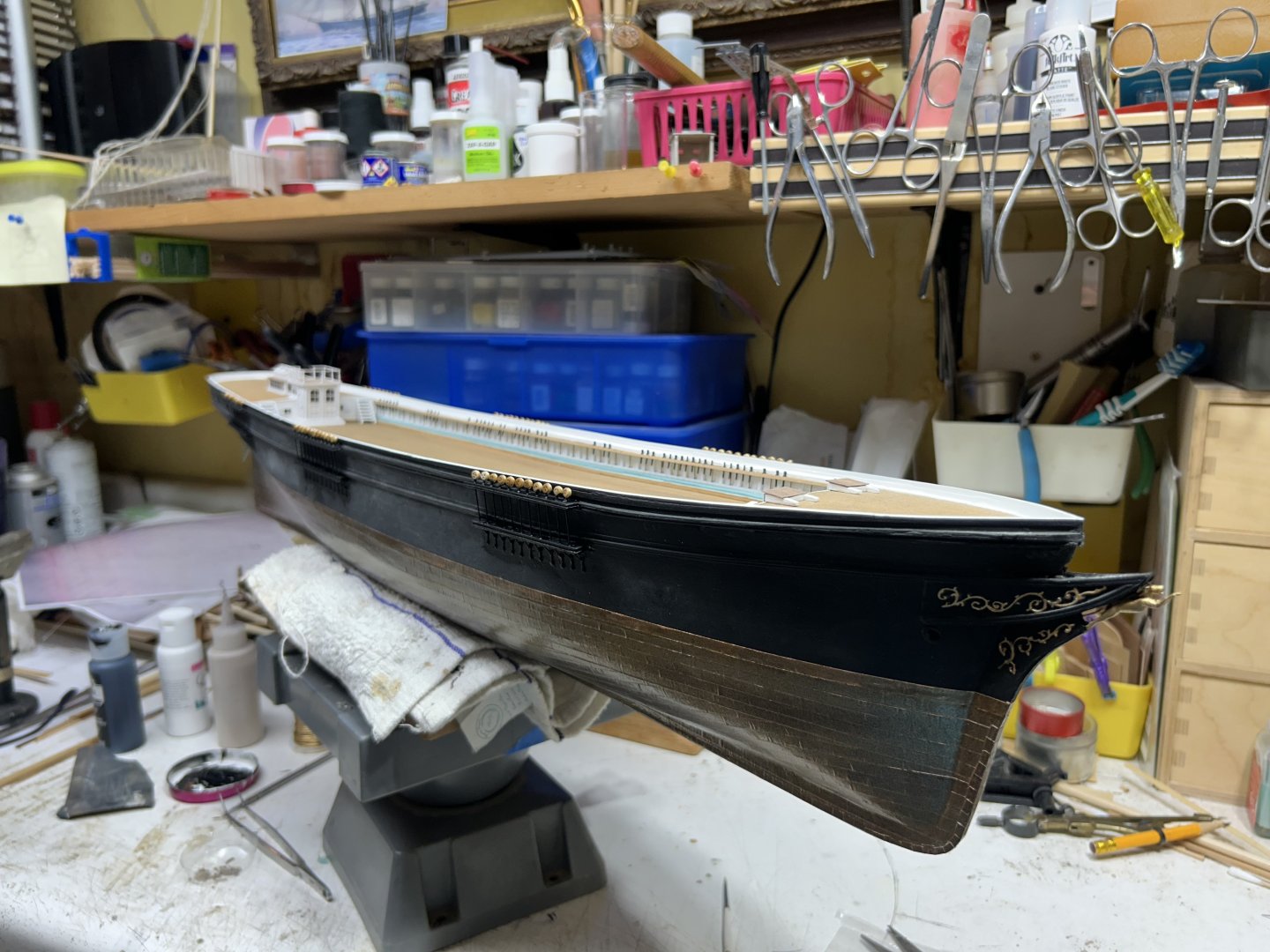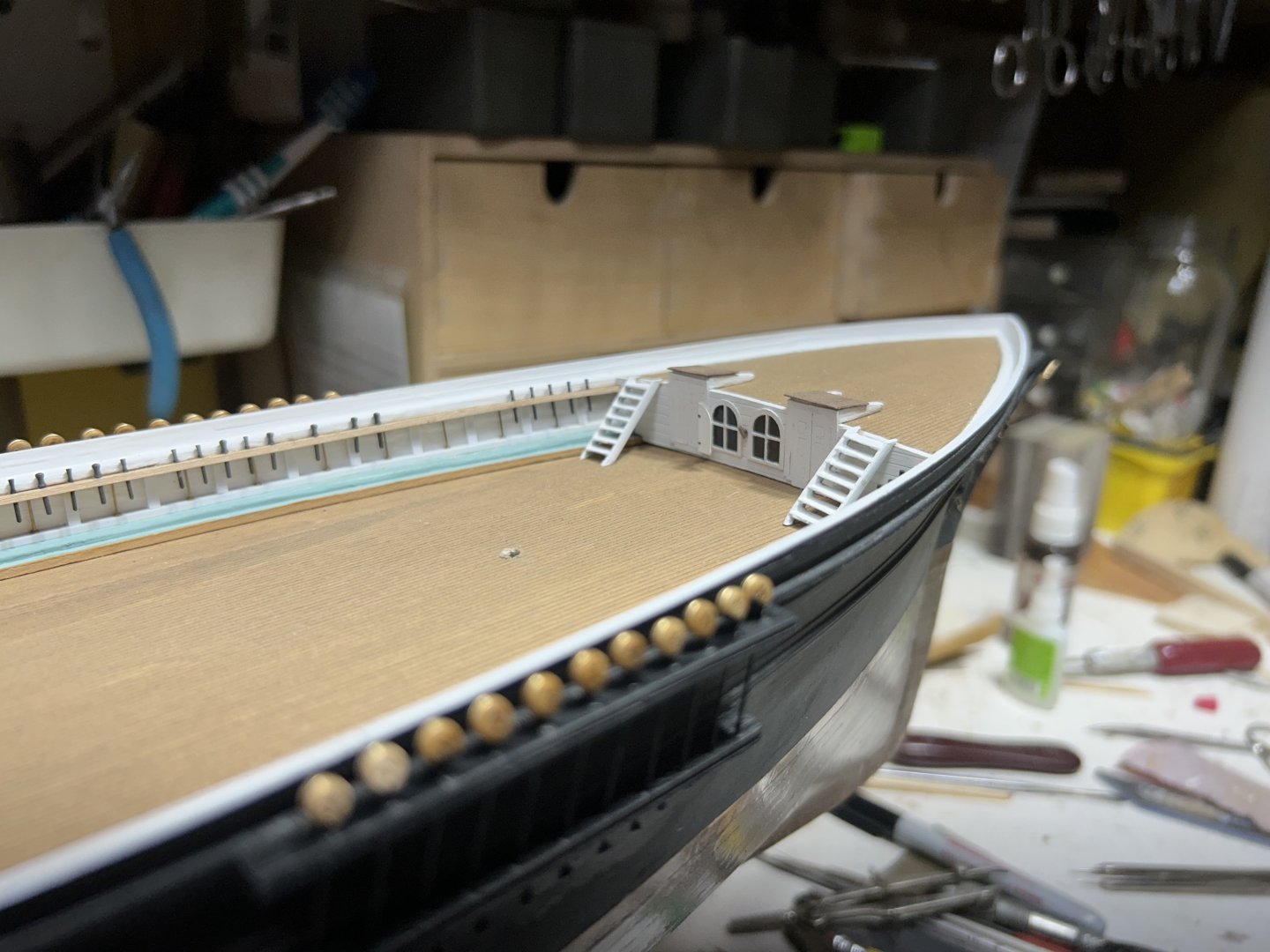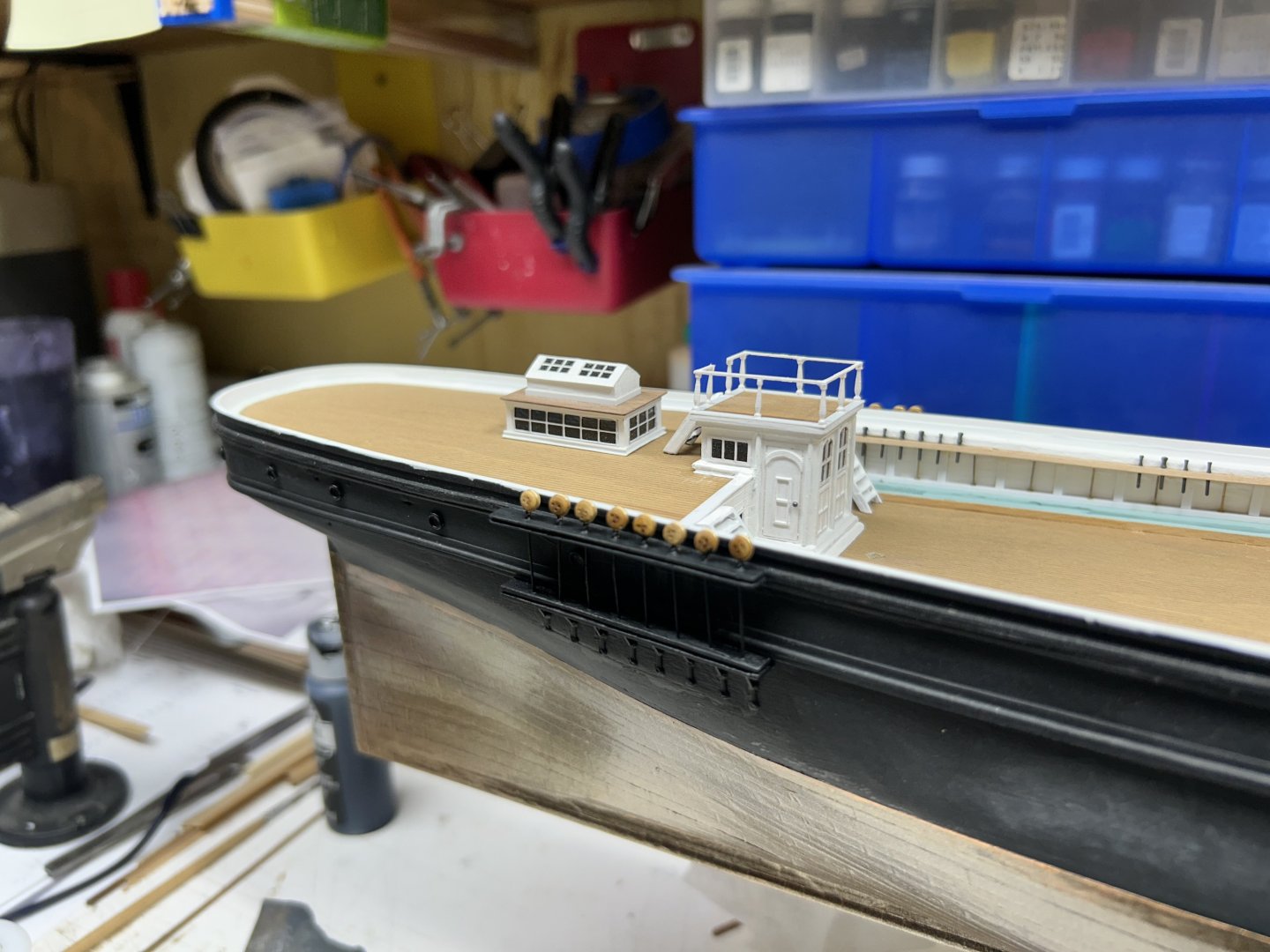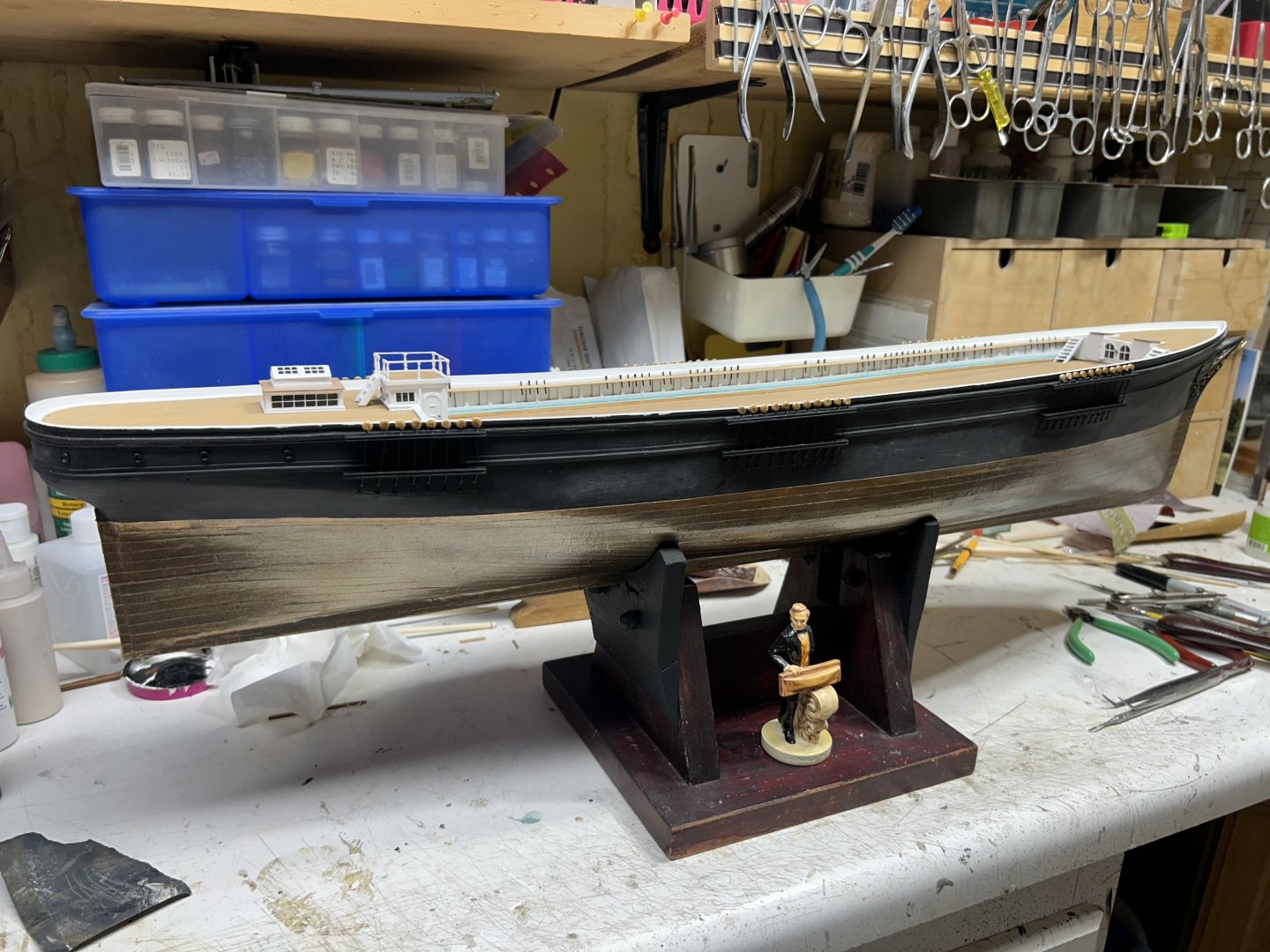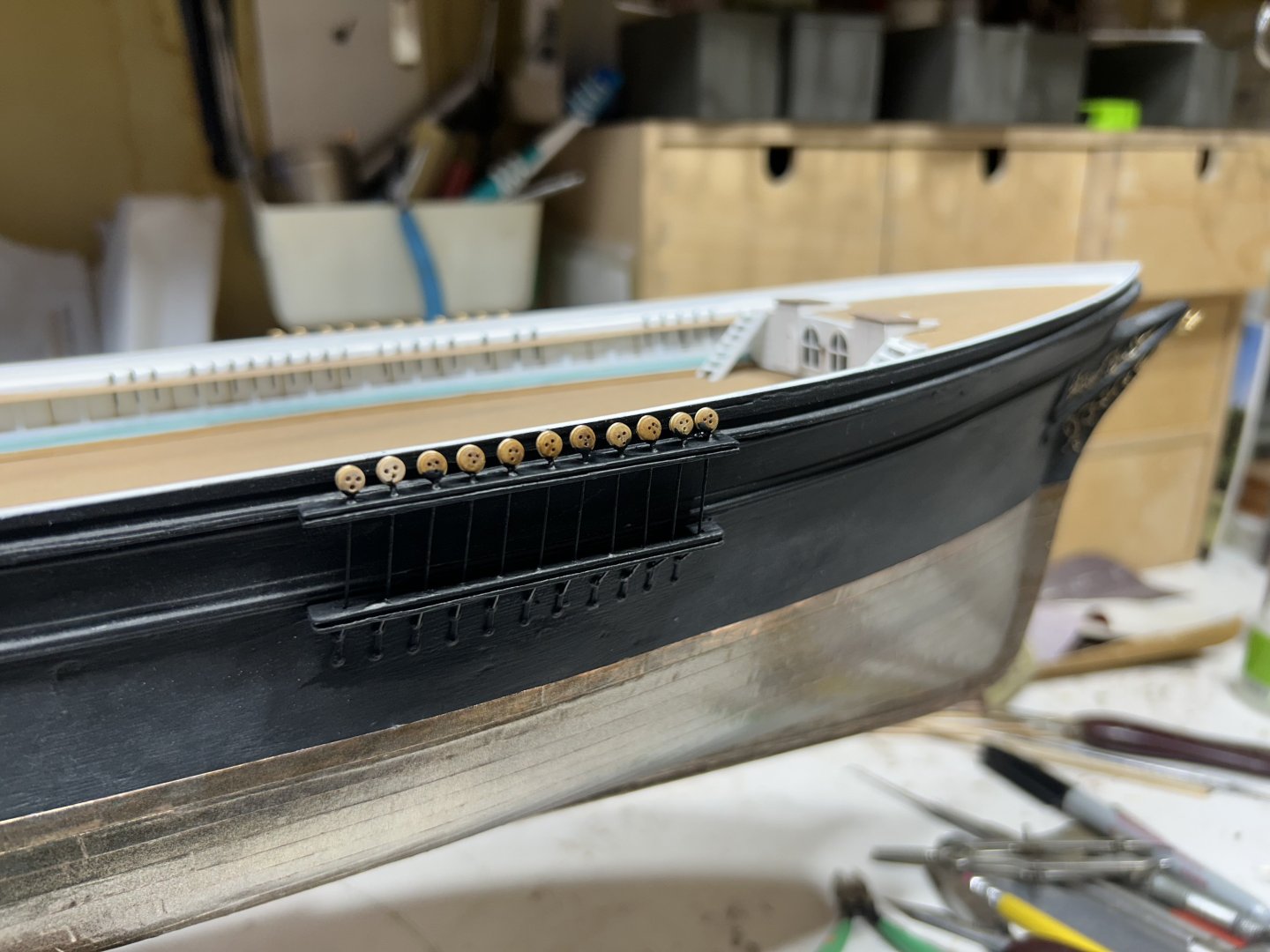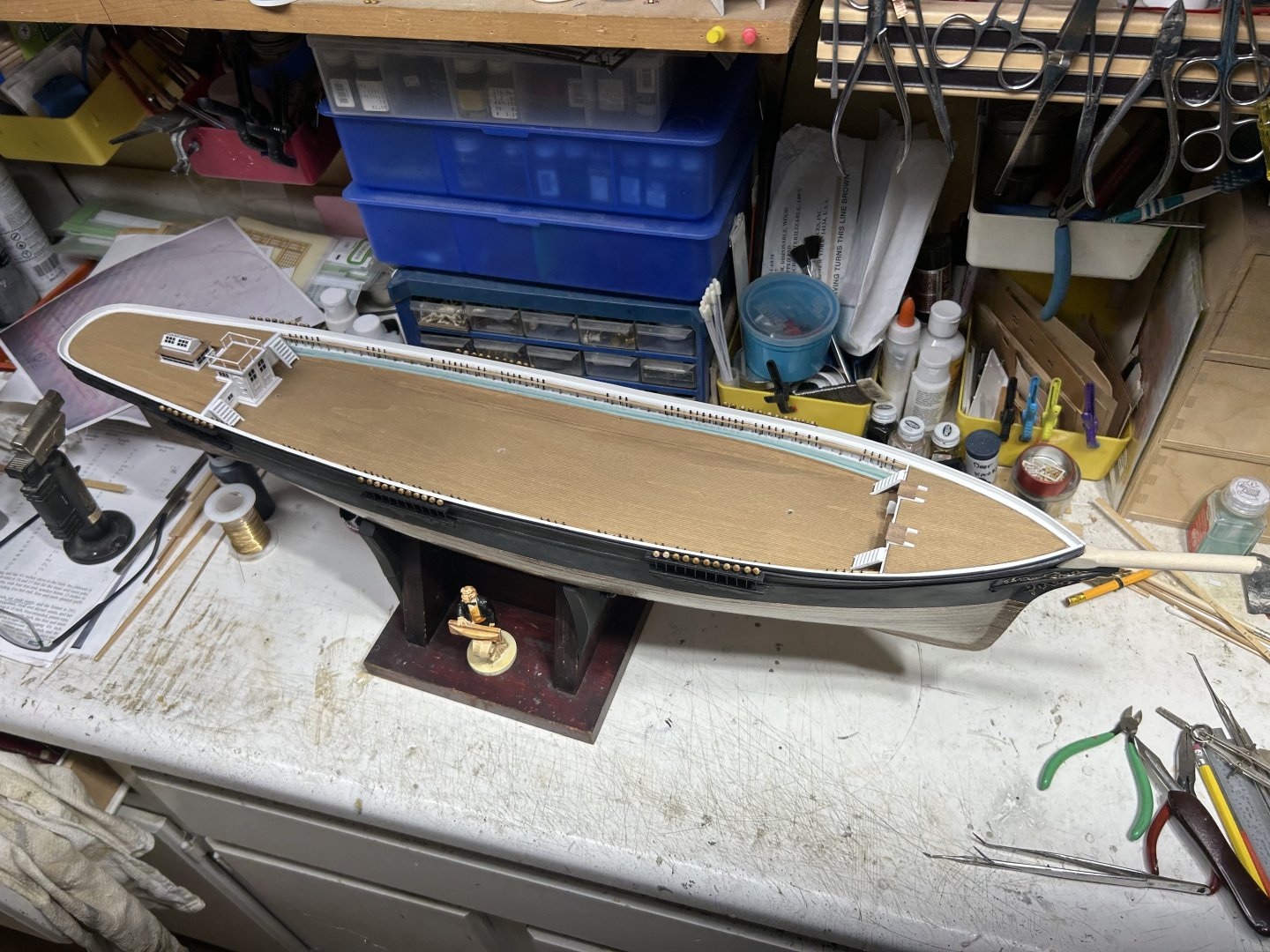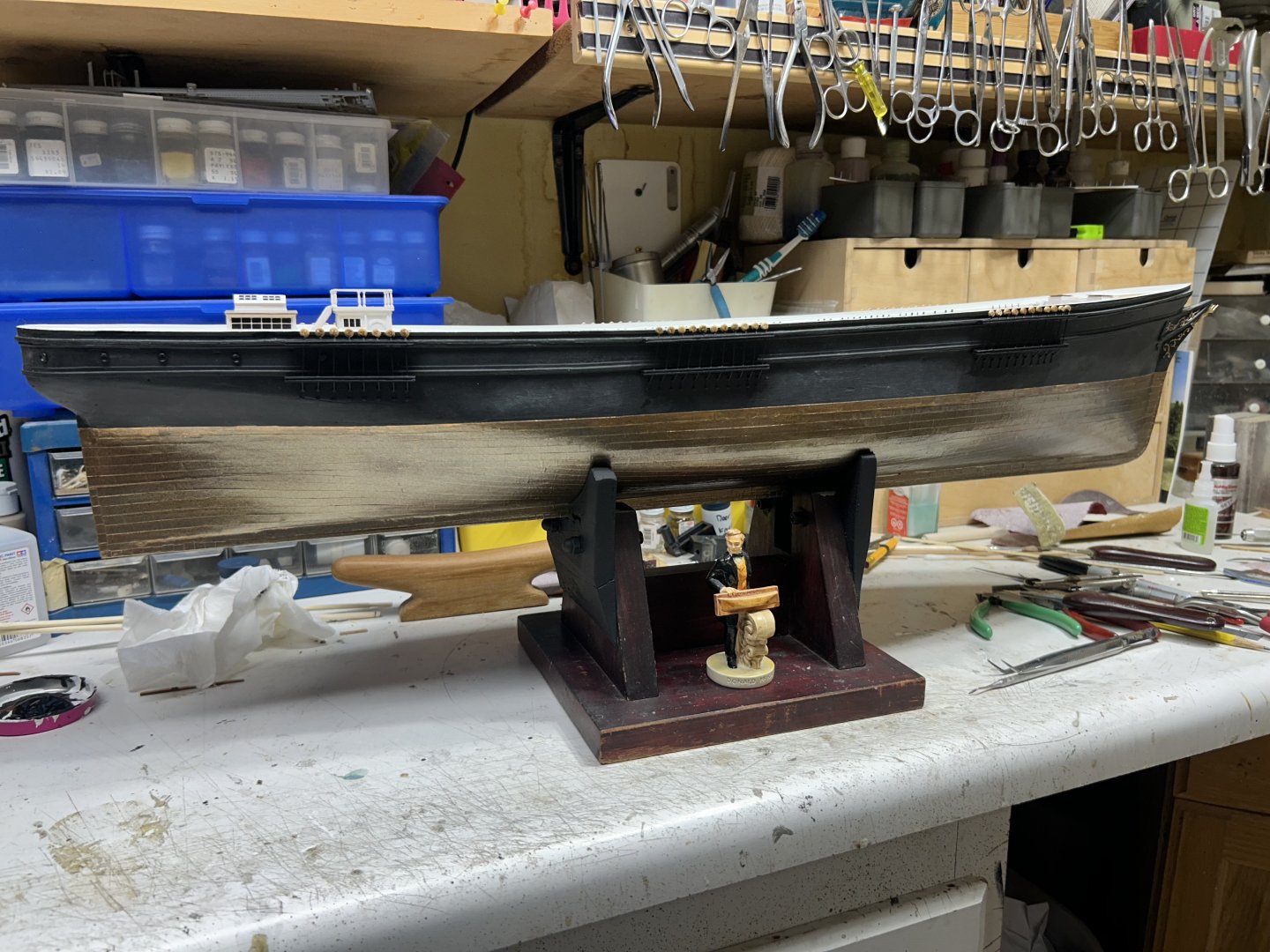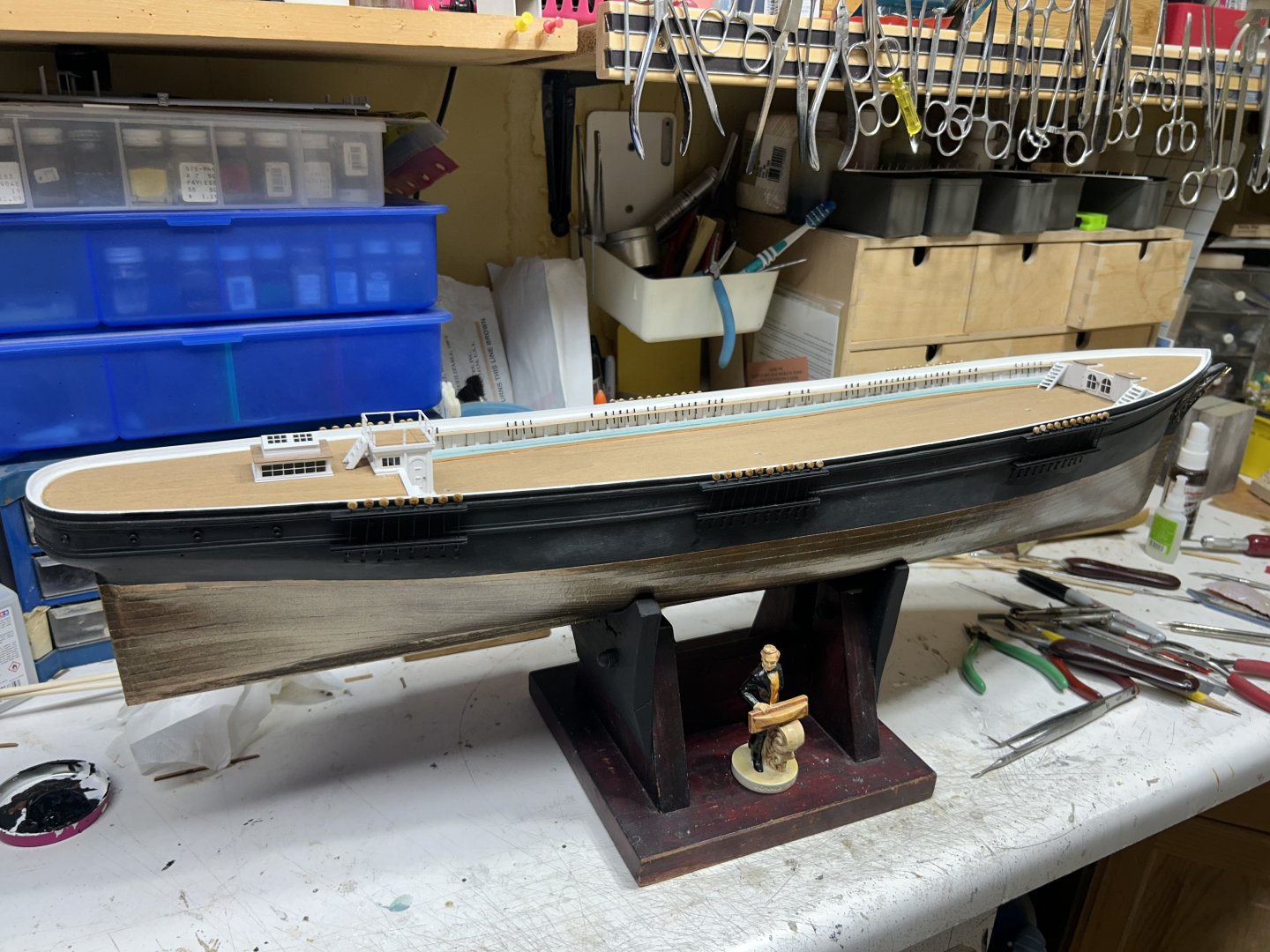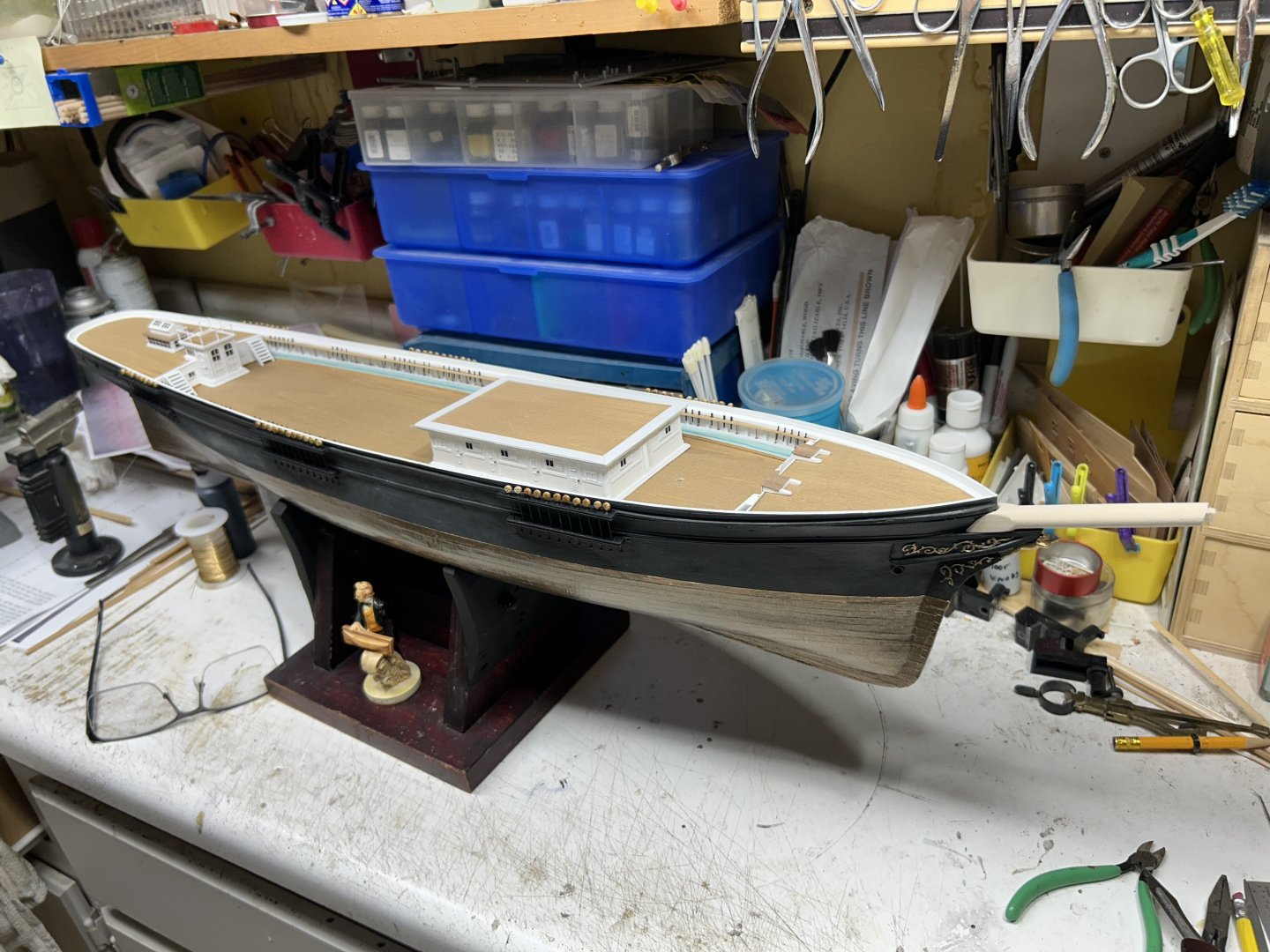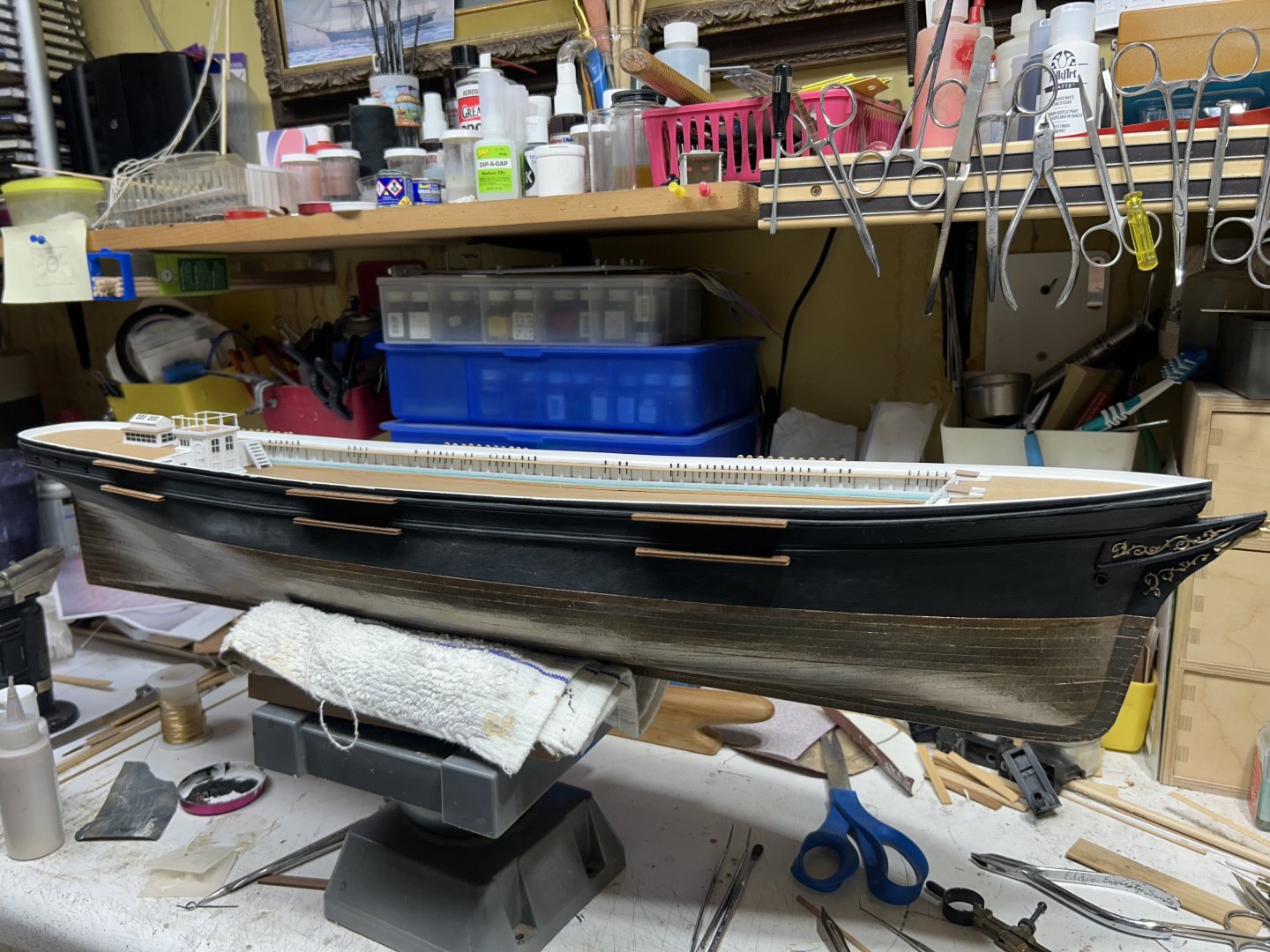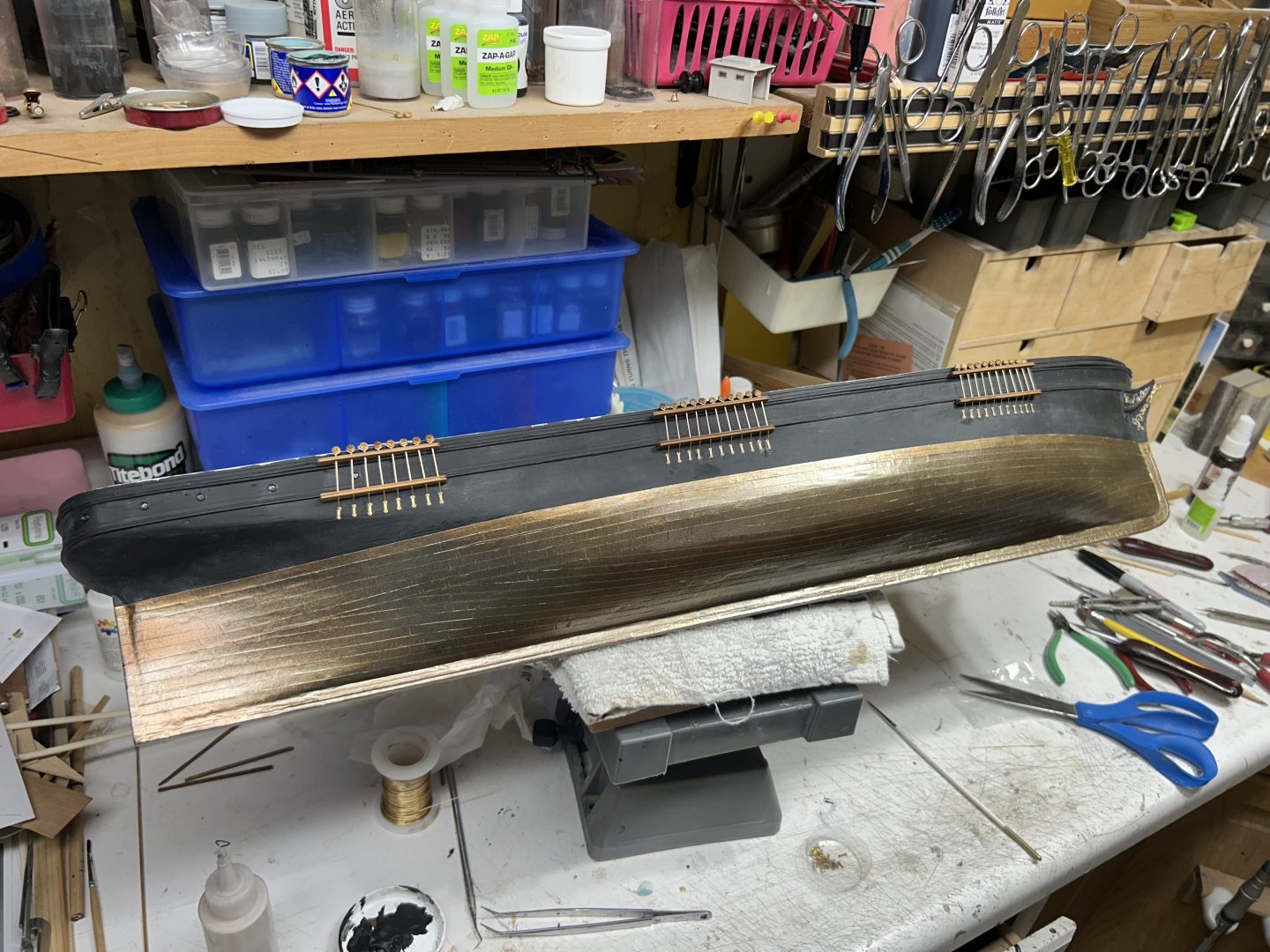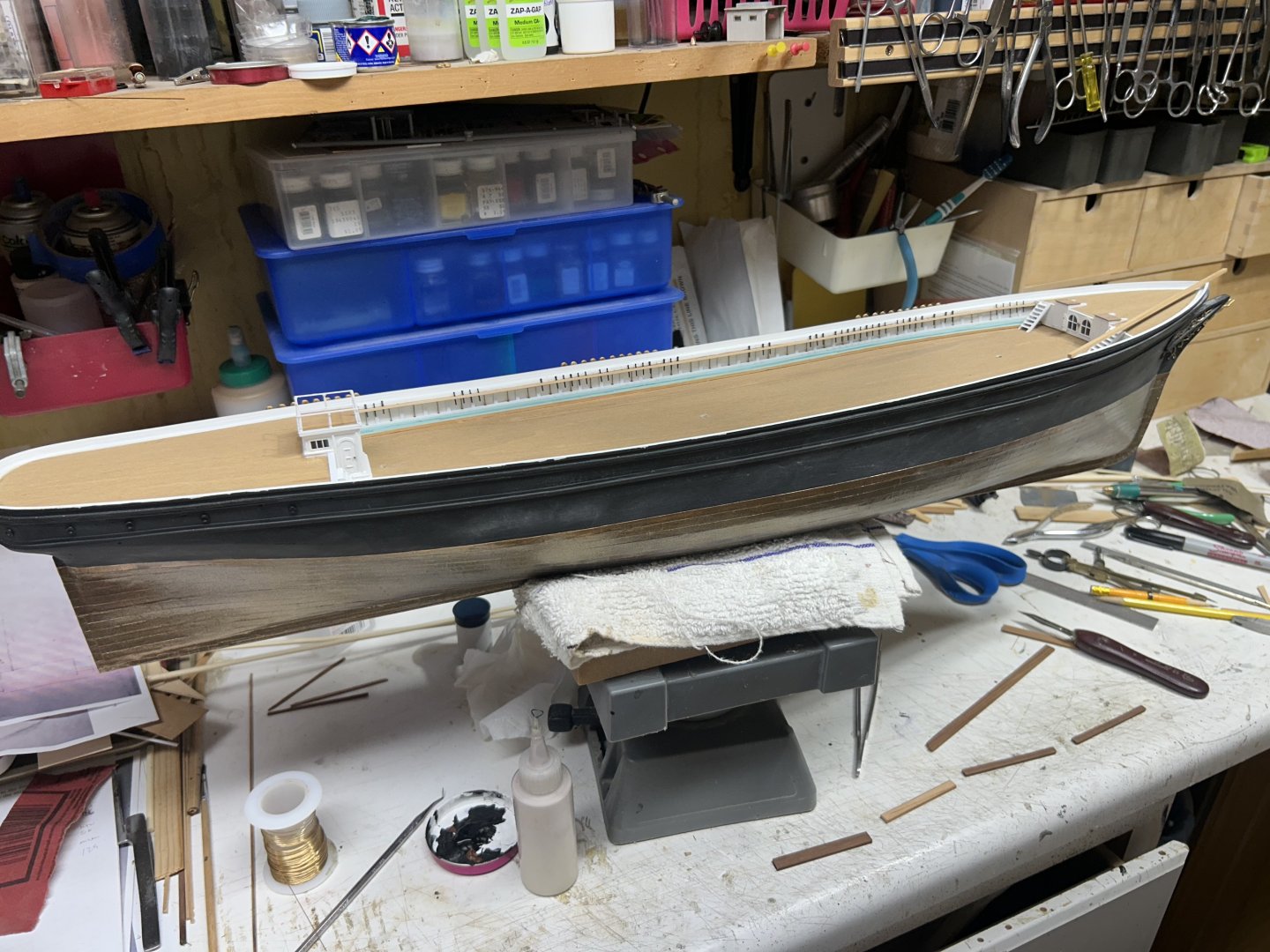-
Posts
5,512 -
Joined
-
Last visited
Content Type
Profiles
Forums
Gallery
Events
Everything posted by rwiederrich
-
Worked through the pain, and made the two capstans. The forecastle double action that drives the windless below and the mahogany one amidships. I then built the three hatchways and the small ladder access cover in front of the mizzen. I made and painted the two large boats on the main house. I opted to paint these a very dark green with blackened bottles , to mimic many paintings of Staghound. Still need to make their skids. Rob
-
Thanks everyone for the fine return comments. We, indeed had a wonderful time at Disney and San Clemente and Carlsbad. The beaches were amazing. The kidney stones came back late last night. I was tortured with pain. Dr says it could take up to two months to pass this monster. I’ll survive, but I’ll do it screaming. More model work will follow later. Rob
About us
Modelshipworld - Advancing Ship Modeling through Research
SSL Secured
Your security is important for us so this Website is SSL-Secured
NRG Mailing Address
Nautical Research Guild
237 South Lincoln Street
Westmont IL, 60559-1917
Model Ship World ® and the MSW logo are Registered Trademarks, and belong to the Nautical Research Guild (United States Patent and Trademark Office: No. 6,929,264 & No. 6,929,274, registered Dec. 20, 2022)
Helpful Links
About the NRG
If you enjoy building ship models that are historically accurate as well as beautiful, then The Nautical Research Guild (NRG) is just right for you.
The Guild is a non-profit educational organization whose mission is to “Advance Ship Modeling Through Research”. We provide support to our members in their efforts to raise the quality of their model ships.
The Nautical Research Guild has published our world-renowned quarterly magazine, The Nautical Research Journal, since 1955. The pages of the Journal are full of articles by accomplished ship modelers who show you how they create those exquisite details on their models, and by maritime historians who show you the correct details to build. The Journal is available in both print and digital editions. Go to the NRG web site (www.thenrg.org) to download a complimentary digital copy of the Journal. The NRG also publishes plan sets, books and compilations of back issues of the Journal and the former Ships in Scale and Model Ship Builder magazines.



